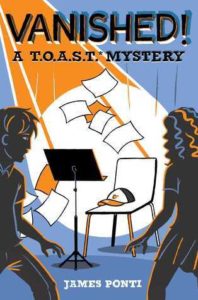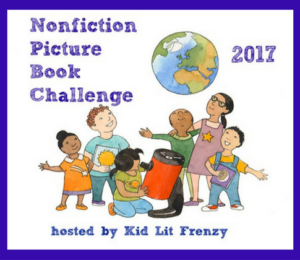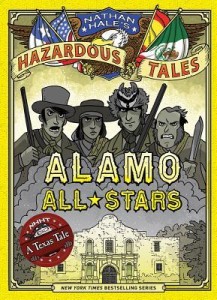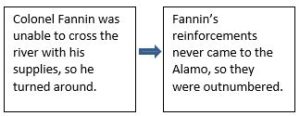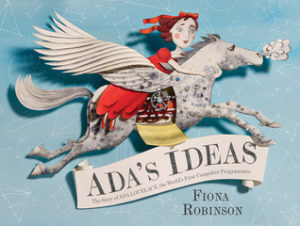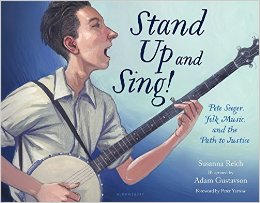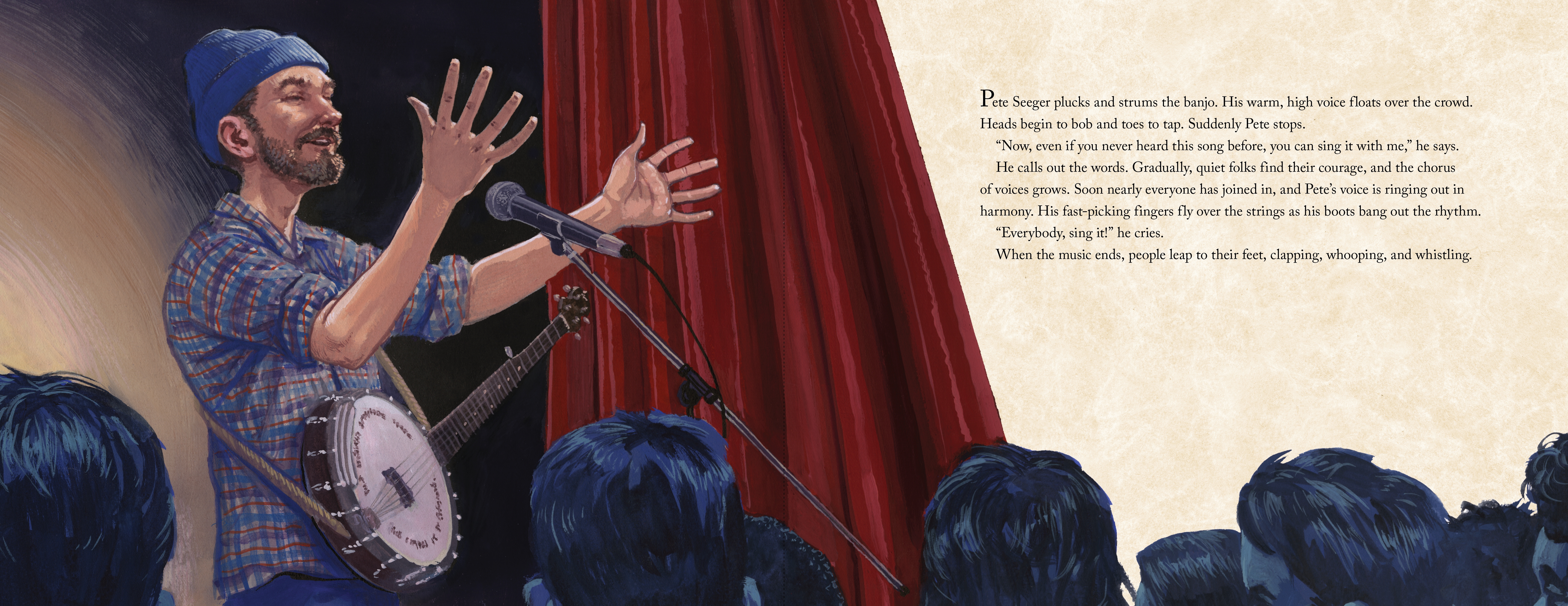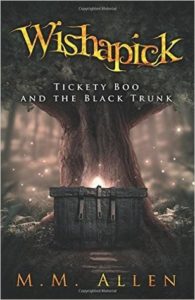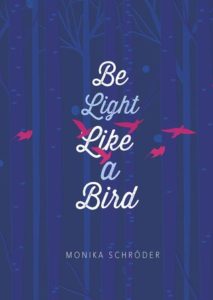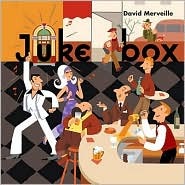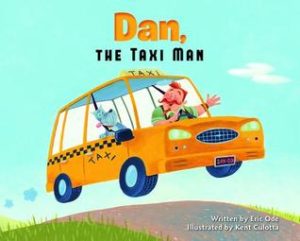Vanished!: A T.O.A.S.T Mystery
Author: James Ponti
Published August 22nd, 2017 by Aladdin
Summary: Florian Bates—the only kid on the FBI Director’s speed dial and several international criminals’ most wanted lists—must uncover the truth behind a series of middle school pranks that may or may not involve the daughter of the President of the United States in this hilarious second novel in the T.O.A.S.T. Mystery series.
Middle school is hard. Solving cases for the FBI is even harder. Doing both at the same time— well that’s just crazy. But that doesn’t stop Florian Bates!
After helping the FBI solve an art theft at the National Gallery and uncovering a DC spy ring, Florian’s finding life at Alice Deal Middle School a little boring. But that’s all about to change! His FBI handler, Marcus, has a job for him! Is it a bank robbery? Counterfeit ring? International espionage? Actually it’s middle school pranks…
Sounds pretty ordinary except that the pranks are happening at a prestigious private school attended by the President’s daughter who may—or may not—be involved. So Florian and Margaret are going undercover to see if they can use their TOAST skills to figure out what’s going on before the media gets hold of the story.
However, once the crime-solving pair arrive at the school, they discover that there’s a lot more than a few pranks going on and the conspiracy of silence reaches all the way to the top. Then a student vanishes in the middle of a concert at the Kennedy Center and things take a sinister turn!
Can Florian and Margaret save the day? Or are they about to get toasted?
Here is my review for FRAMED the first of the T.O.A.S.T. Mysteries 🙂
Review: Like Framed!, Vanished! is a crazy adventure of a mystery with twists and turns that make the reader struggle to solve the mystery before Florian does! Once again Ponti’s mystery is easy to follow yet complicated enough to make it so that the reader doesn’t figure everything out before the end (which I think is the best kind of mysteries!).
What I love about this mystery, is that it teaches us more about the characters while also putting them in a whole new setting and mystery. I really enjoyed how different the two mysteries were and how Florian and Margaret’s character development really grew. Anyone who loves Framed! is going to be so happy with the sequel.
Teachers’ Tools for Navigation: Like Framed!, I think it would be so much fun to play some mystery games with TOAST. And just liked Framed! dealt with art, this mystery includes classical music which can be explored along with it being introduced in the story.
Discussion Questions: Who did you think the prankster was?; Did the solution to the mystery surprise you?; What foreshadowing clues were there to show who the villain was?; What part of Florian and Margaret’s time in school is most realistic to the real experience?; How does Margaret help Florian face his bullies?
Flagged Passages: (When the headmaster doubts that Florian and Margaret can help, they put TOAST on display.)
“‘You have nothing to worry about, Dr. Putney,’ I assured him. ‘W’re discreet. We’ll approach it the same way you approached your church mission. Just like when you went to Brazil and adapted to their customs, we’re guests and will respect the customs and traditions unique to Chatham while we do our work.’
Marcus shot me a wink.
‘Y-y-yes,’ he stammered, trying to make sesne of what I’d just said. ‘But how did you know that?’
‘How did I know what?’ I asked. That you went on a mission? Or that it was to Brazil?’
‘Both,’ he replied.
‘TOAST,’ I said.
‘Toast?’
‘The Theory of All Small Things.’ answered Margaret. ‘The idea is that little details often give away much bigger pieces of information than you think. When you add them up, you have an indisputable truth. That’s how we’re going to find who’s responsible for the pranks. Florian and I are going to use TOAST.’
He looked back and forth at us like we were speaking a foreign language. ‘What little details could possibly tell you that I took a mission to Brazil?’
‘On the wall beside your desk are your college diplomas,’ I explained. ‘They’re from Bringham Young University. Over ninety-eight percent of the students at BYU are Mormon. And roughly a third of all Mormon men go on a mission.’
‘Okay, but that means two-thirds don’t,’ he said as a challenge. ‘What makes you think I did?’
‘You’re featured in the welcome video not only as a headmaster but also as a graduate of Chatham Day,’ I replied. ‘But there’s a six-year gap from your high school graduation until the date you received your bachelor’s. That’s four years of college with two years left over for your mission.’
‘As to Brazil,’ Margaret said, picking up without missing a beat, ‘that was easy. There’s a picture of you on the far bookcase when you were about twenty years old. You’re standing in front of the giant Christ the Redeemer statue, which is in Rio. There’s also a picture of your family on your desk. It looks like a vacation shot and it in you’re wearing a yellow-and-green jersey. Anyone who plays soccer knows it’s the jersey of the Brazilian national team. I’m guessing you became a fan while you lived there and you’ve continued ever since.’
He sat for a moment flabbergasted, unsure what to say.” (p. 32-34)
Read This If You Love: Mysteries like FRAMED! by James Ponti, Wig in the Window by Kristen Kittscher, Great Greene Heist by Varian Johnson
Recommended For:
